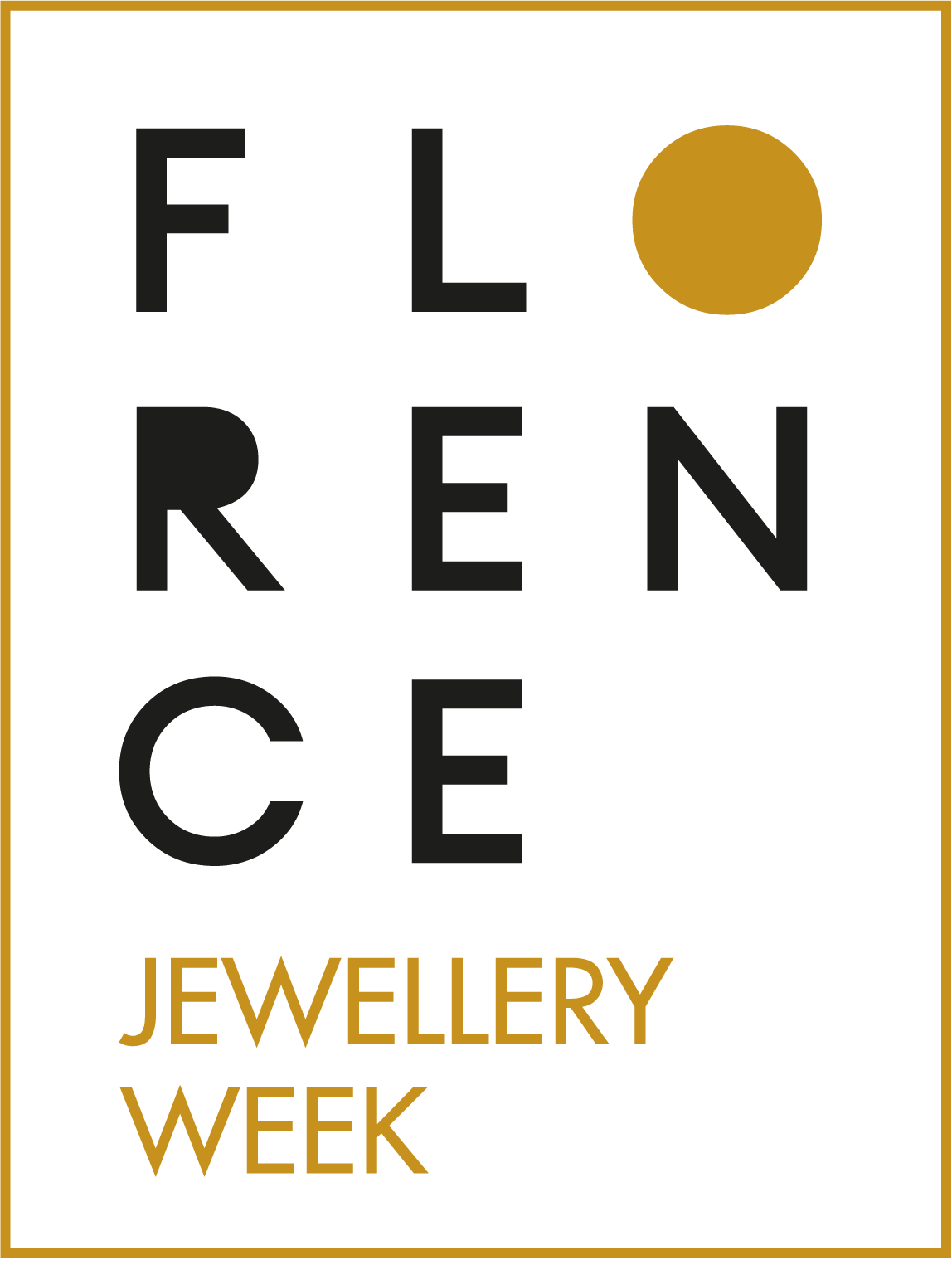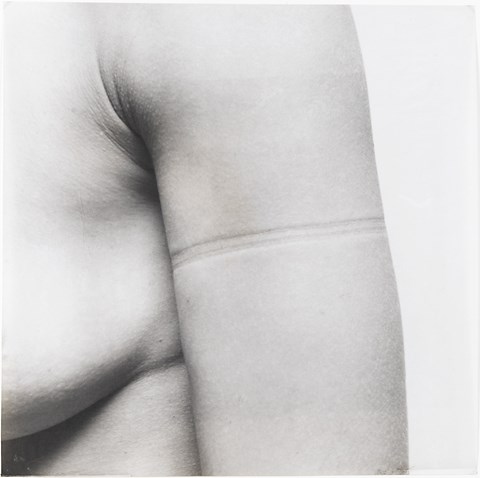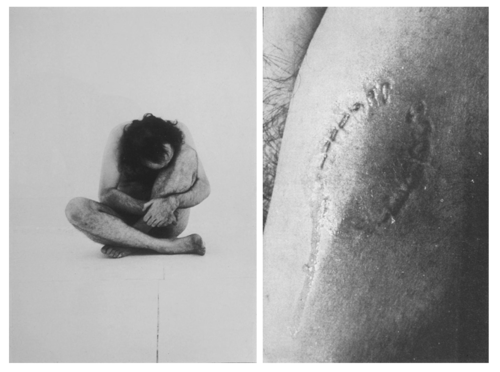In the seventies, many goldsmiths artists face up with decoration as a new way of thinking, as an alternative and autonomous experimental realm of conceptual art.
Some researches question the “eternal” aspect of the precious object, our intimate bound with it and its worth with the passing of time. In this way, contemporary jewellery definitely imposes itself as an occasion for artistic reflection.
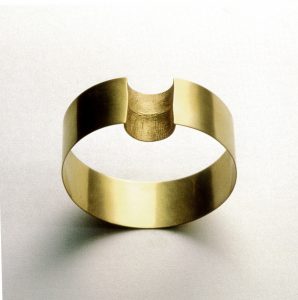
Gerd Rothmann, Index Finger, bracelet, 1992, gold. Preziosa 2006
Gerd Rothmann, who attends Preziosa 2006, makes jewels in which the trace of his buyer is forever impressed, establishing a deep connection with the wearer. Traditionally, jewels preserve the memory of a darling, as inherited gifts. In Rothmann, the physical reminder is stronger because ornaments are conceived to be extremely individual. He realises unconventional silver or gold decorations for specific and personal parts of the body moulded on his clients, such as Achille’s Heel for Fritz Scheuer’s heel (1978) or Insight of the nose for Daniel Fusban (1987).
The personal jewel, as a physical trace of his owner, is also a central theme of Gijs Bakker‘s research, who, in 1974, draws a profile ornament for his wife, Emmy Van Leersum.
Bakker, another guest of Preziosa 2006, thinks about decoration in its connection to the wearer’s body surface.
In Shadow Jewellery (1973), he captures the ephemeral imprints that minimal bracelets left after have been wrapped and pressed on arms or legs.
The logic of marking the skin by stressing it, remembers Trademarks (1970) by Vito Acconci, who bits into his body, signing it as much as possible with his teeth. Such operations are documented by photographs, that paradoxically makes them eternal.
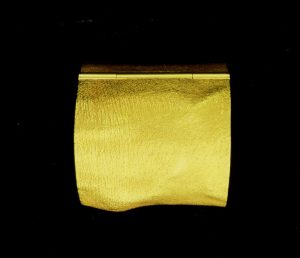
Gerd Rothmann, From him for her, bracelet, 1990, gold. Preziosa 2006
The involvement of the wearer’s body inscribes these kinds of surveys in a broader current that spreads from the sixties in Europe and in the United States: body art. Acconci discovers, by the marks left on himself, his physical boundaries and the proof of his existence .
Also in Rothmann’s work, someone’s trace is materialised, but to add on another’s presence, like in From him for her (1990), where a male wrist closes around that of his beloved.
Instead, in Bakker, the absence of the jewel reveals the evidence of an earlier presence, that is no more visible. The durability of the metal comes into conflict with the immaterial sign, which quickly vanishes. As the Ice Jewellery (1999) by Naomi Filmer, invited to Preziosa 2006, ornament has a short life: jewels dissolve because of the body’s warmth, revealing their transience.
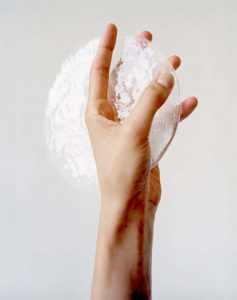
Naomi Filmer, Ice Jewellery, 1999, ice. Preziosa 2006
 Peter Skubic is one of Preziosa‘s first participant in 2005. Father of a kind of irreverent attitude in contemporary jewellery, in 1975 he undergoes a surgical operation during which he makes implanted a small plate of steel under his skin that he keeps until 1982. Seven years later, he removes the sheet, hidden it again in the bezel of a finger ring. Traumatically introducing the jewel inside his body, he transforms it in a “foreign body”, creating a bond with the wearer that could not be closer and more intimate. The ornament disappears, and what it remains, in the end, is an indelible scar on his body, which could be read as an artificial form of decoration too.
Peter Skubic is one of Preziosa‘s first participant in 2005. Father of a kind of irreverent attitude in contemporary jewellery, in 1975 he undergoes a surgical operation during which he makes implanted a small plate of steel under his skin that he keeps until 1982. Seven years later, he removes the sheet, hidden it again in the bezel of a finger ring. Traumatically introducing the jewel inside his body, he transforms it in a “foreign body”, creating a bond with the wearer that could not be closer and more intimate. The ornament disappears, and what it remains, in the end, is an indelible scar on his body, which could be read as an artificial form of decoration too.
